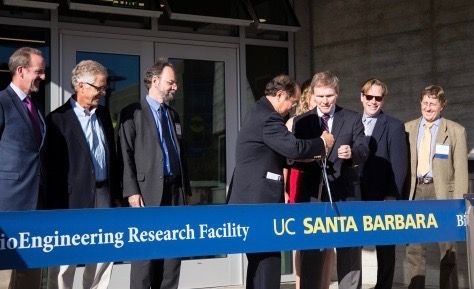UCSB’s new $86 Million Research Hub for Bioengineering

Bioengineering and biomedical research at UCSB has been going on organically all over campus, dispersed for more than 10 years. The desire for a physical home for this research to be collaboratively conducted under one umbrella began back in 2010 with the ICB’s former Director Frank Doyle and a few others on campus, who at the time became aware of the need.
The new bioengineering building at UCSB, which was formally approved in April of 2011 had its grand opening on Thursday, October 19th with a ribbon-cutting ceremony and reception which included comments from the ICB’s Co-Director Brad Chmelka and ICB former Director and current John A. Paulson School of Engineering and Applied Sciences at Harvard University Dean Frank Doyle.
As ICB Co-Director Brad Chmelka articulated, “Buildings like this are crucial in that they allow people to come together from many different departments in order to talk and learn from each other, which provides a source of ideas and creativity and applications that wouldn’t happen otherwise if people are in their respective silos of isolation. The future is brighter for a broad range of shared research because of this investment.”
This new state-of-the-art research facility is now home to the ICB and the Center for Bioengineering (CBE), as well as bioengineering focused faculty from several different departments across campus including their research laboratories and personnel. The building will house 15 faculty and more than 150 graduate students and postdoctoral researchers.
“This is a gorgeous building that we are so pleased and proud to call our new home, but I’m also excited at a higher level by what the building means to bioengineering at UCSB,” said Kevin Plaxco, ICB project leader and director of the UCSB Center for BioEngineering. “At many schools, bioengineering really means biomedical engineering, so building devices to solve today’s medical problems. That’s an amazing and venerated field, and we do some biomedical engineering here, of course, but we’re also looking farther. We want to do revolutionary things to solve challenges ten years from now or thirty years from now. We’re trying to steal from nature the tricks, the materials and the ideas that evolution has invented to solve problems and apply those to a broad range of human problems.”
March 2014 ICB story on the bioengineering building project.
